Are you having difficulty choosing the right material for your application? Choosing the wrong material can cause serious problems such as a component failure or a machine downtime.
4140 Steel plates have excellent toughness, high strength and versatility, which makes it a great material for any of your projects
In this blog post we will talk about 4140 alloy steel plate properties, application, production, quality testing and best suppliers
What is 4140 Steel Plate?
4140 steel plate is a low-alloy steel known for outstanding strength and resilience. It’s widely used where high-performance metals are critical.
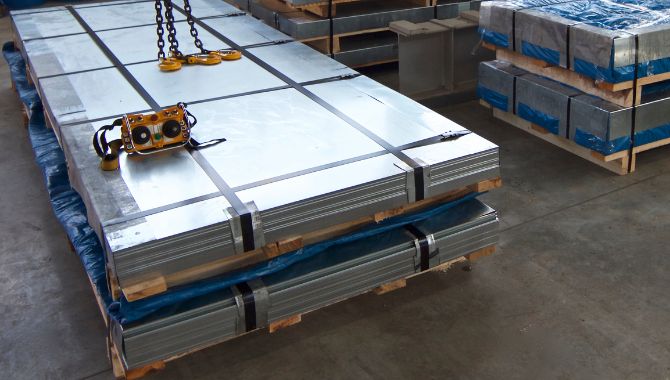
Chemical Composition of 4140 Steel Plate
| Element | Percentage (%) |
| Carbon | 0.38 – 0.43 |
| Chromium | 0.80 – 1.10 |
| Molybdenum | 0.15 – 0.25 |
| Manganese | 0.75 – 1.00 |
| Silicon | 0.15 – 0.35 |
| Phosphorus | 0.035 max |
| Sulfur | 0.040 max |
| Iron | Balance |
Mechanical Properties of 4140 Steel Plate
| Property | Value |
| Tensile Strength | 95,000 – 115,000 psi |
| Yield Strength | 60,000 – 70,000 psi |
| Elongation | 10 – 18% |
| Hardness | 275 – 320 Brinell |
How a 4140 Steel Plate Is Produced?
Making 4140 steel plate involves several key steps. First, iron ore and alloys are melted in a basic oxygen furnace. The molten steel is then refined, cast, hot-rolled into plates. Finally the plates go through a heat treatment process. There they are first normalized at 870°C then oil quenching and atllast they are tempered at 400 to 650 degrees so that durability and ideal strength can be achieved.
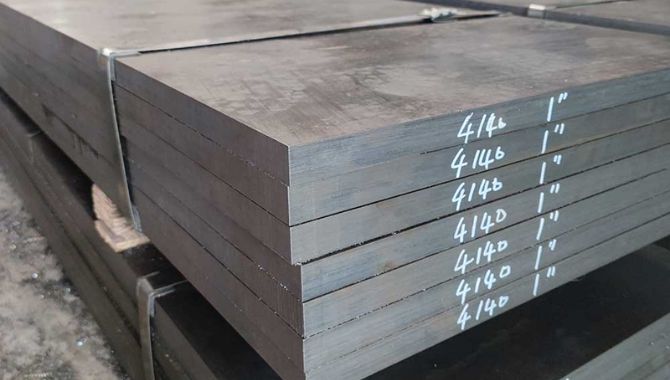
Features of 4140 Steel Plate
Machines Easily
4140 steel plate machines well, particularly when annealed. With 65% machinability versus 1212 steel, it balances workability and strength.
When machining 4140, use high-speed steel or carbide tools with positive rake angles to minimize cutting forces and heat. Best cutting speeds are 70-110 surface feet per minute (SFM) for high-speed steel tools and 150-250 SFM for carbide. These speeds are necessary for efficient removal of material while maintaining tool life.
High Strength
Famous for great mechanical properties, 4140 steel plate shows superb strength. Quenched and tempered, it reaches 850-1000 MPa tensile strength and 665-795 MPa yield strength.
Its excellent strength-to-weight ratio comes from its chromium-molybdenum alloy makeup which forms fine carbide particles during heat treatment. These features greatly improve steel’s deformation resistance when loaded. It makes it perfect for high-stress uses.
Cost-Effective
For the price, 4140 steel plate gives extraordinary performance. Priced reasonably at $1.20 to $1.80 per pound, it outdoes many alloy steels in high-stress uses. Its superior durability means less maintenance over time. It makes it a smart economic choice for long-lasting projects.
When you factor in its long lifespan and low upkeep needs, 4140 steel plate is very cost-effective for industries that need high-performance materials.
High Toughness
A key trait of 4140 steel plate is its exceptional toughness. This comes from its finely tuned microstructure that is acquired through precise heat treatment.
The plate shows a Charpy V-notch impact strength of 54-61 J at room temperature and beats many similar alloys. Its tempered martensitic structure, with fine carbides, stops cracks spreading successfully. This microstructure means superior fatigue resistance, with 310 MPa fatigue strength at 10^7 cycles.
Corrosion Resistant
4140 steel plate has good corrosion resistance, mainly due to its chromium (0.80-1.10%) and molybdenum (0.15-0.25%) content. These form a protective oxide layer that improves durability in different environments. In air-saturated 3.5 wt% NaCl solution, 4140 steel shows lower corrosion rates than uncoated samples across various pH values.
For more protection, plasma nitriding treatments can further boost corrosion resistance as shown by tests in artificial seawater. This natural and treatable corrosion resistance makes 4140 steel plate excellent for uses in moderately corrosive settings.
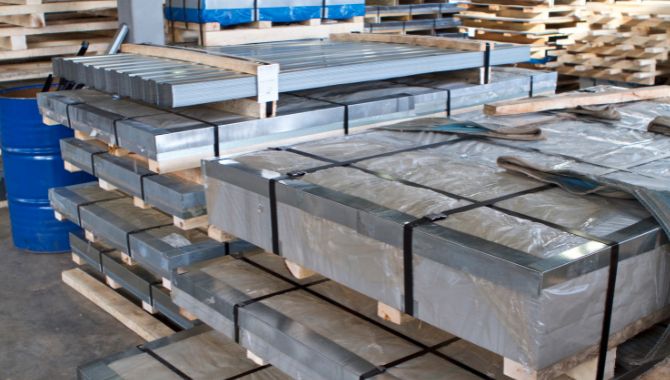
Top 8 Applications of 4140 Alloy Steel Plate
The great properties of 4140 alloy steel plate, like high strength, corrosion protection and resilience, make it very flexible across different sectors. Let’s look at some of them:
Automotive
In the auto industry, 4140 has many uses in high-stress, fatigue-prone components.
- Crankshafts benefit from 4140’s superior 310 MPa fatigue strength at 10^7 cycles.
- Transmission gears need both wear and toughness, often using 4140 steel.
- 4140 can surface harden to 58-60 HRC but stay tough inside. It’s perfect for CV joints that need high torque and frequent movement.
Aerospace
In aircraft, 4140 shows exceptional performance and flexibility.
- Landing gears which go through extreme impact on takeoff/landing mostly use 4140 parts. The 310 MPa fatigue strength of 4140 at 10^7 cycles brings durability despite repetitive stress.
- Wing attachments need 4140’s 850-1000 MPa tensile strength for flight stability.
- Some engine components utilize 4140 to maintain structural integrity at 400-650°C temperatures.
Construction and Mining
The robust quality of 4140 steel plate makes it vital in construction and mining work.
In mining, it’s used for drill collars, withstanding borehole pressures up to 20,000 psi. Conveyor parts benefit from 4140’s wear resistance, with 275-320 HB Brinell hardness.
For construction, 4140 excels in heavy equipment manufacturing. Excavator teeth and bulldozer blades use its 665-795 MPa high yield strength to stay sharp despite extreme abrasion. The material’s toughness, with 54-61 J Charpy V-notch impact strength at room temperature, guarantee durability in these taxing applications.
Heavy-Duty Equipment Production
4140 steel plate excels in heavy equipment manufacturing thanks to exceptional mechanical properties.
- In gears and shafts, it offers 655 MPa high torsional strength for reliable power transmission under extreme loads.
- For hydraulic cylinders, 4140 steel’s 665-795 MPa yield strength withstands 20,000 psi pressures. Its 65-95% machinability rating (versus 1% carbon steel) enables production of quality complex components.
- Heat-treated 4140 steel reaches 54-59 HRC surface hardness which is ideal for wear-resistant excavator teeth and bulldozer blades in abrasive settings.
Oil and Gas
The oil/gas industry heavily uses 4140 steel plate for its great properties.
- In drilling, 4140 is used for drill collars, handling pressures up 20,000 psi and over 150°C temps.
- For offshore platforms, 4140 is used in valve bodies and wellhead equipment as it offers 665-795 MPa yield strength. Its 0.80-1.10% chromium gives corrosion resistance.
- In pipelines, 4140’s ~310 MPa fatigue strength at 10^7 cycles makes sure of long-term reliability under cyclic loads.
Machine Tool
For precision machining, 4140 excels as a component material.
- Milling spindles made of 4140 can gain up to 58-60 HRC hardness through heat treatment. It gives them exceptional wear resistance.
- For lead screws, 4140’s 850-1000 MPa tensile strength offers needed rigidity for accuracy under high loads.
- In machine beds, 4140’s 665-795 MPa yield strength minimizes deflection that is necessary for tight tolerances. Its 65-95% machinability rating (vs. 1% carbon steel) enables complex part making with great quality.
Defense Uses
For the military, 4140 steel plate’s special properties make it very important for specialized gear.
- Its through-hardening abilities lets it have uniform hardness across thick sections. It’s very important for armor plates that need consistent ballistic performance.
- When carburized, 4140 steel can reach 60-62 HRC case hardness. It improves surface wear resistance while keeping a tough core. This is particularly useful in firearm parts like bolts and receivers.
- For military vehicle suspensions, 4140 steel’s high fatigue limit-to-tensile strength ratio (about 0.5) means reliability under cyclic loading.
- In naval uses, its cracking and corrosion resistance in marine environments, plus its strength, makes it suitable for submarine hull penetrators and torpedo tube parts.
Power Generation Uses
In power generation, 4140 steel plate is used due to its rare mix of attributes.
- Turbine rotors, under extreme centrifugal forces and temperatures, benefit from 4140’s 665-795 MPa high yield strength.
- For steam turbine blades, the material’s creep resistance up to 480°C gives long-term dimensional stability.
- In nuclear plants, 4140 steel is used for reactor vessel internals that leverages its 310 MPa fatigue strength through 10^7 cycles.
- The steel’s 0.80-1.10% chromium also gives corrosion resistance in places with high-pressure steam. It makes it ideal for boiler parts and feedwater systems.
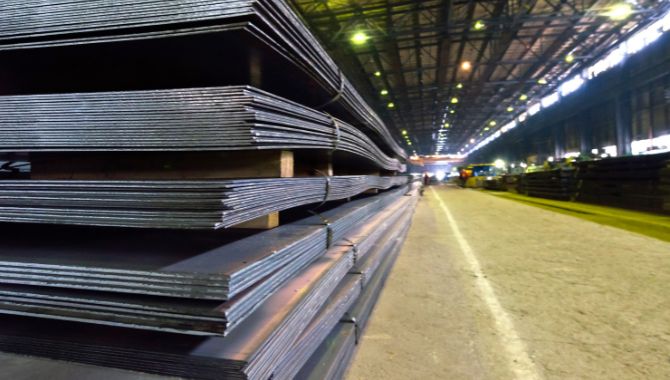
How to Check the Quality of a 4140 Alloy Steel Plate?
Checking the quality of 4140 alloy steel plate is key since we’ve seen its many uses. Let’s look at the main test methods, starting with tensile testing.
Tensile Testing
Tensile testing is fundamental for judging 4140 steel plate quality. It gives vital data on strength and ductility. This test uses ASTM E8 standards on machines up to 600 kN capacity.
The process takes dog-bone shaped samples from the plate, typically 12.5 mm diameter and 50 mm gauge length. During testing, the specimen gets stretched under tension until failure.
Key things measured are yield strength (665-795 MPa), ultimate tensile strength (850-1000 MPa) and elongation (12-17%). Measuring these values is important to confirm the plate to industry specifications and to determine its performance under load.
Hardness Testing
Hardness testing allows quick, non-destructive 4140 steel plate checks.
For this, Brinell and Rockwell methods are common. Rockwell is preferred for speed and accuracy.
The Rockwell C test uses a diamond cone indenter with a minor 10 kg then major 150 kg load. Penetration depth difference determines hardness level.
For 4140 steel, 22 to 30 HRC is typical, depending on heat treatment. This enables rapid quality checks onsite.
Fatigue Testing
Checking fatigue is very important for judging the durability of 4140 steel plates under repeating load conditions. This method finds the material’s fatigue limit making it very important for parts undergoing repeated stress.
Common techniques involve axial loading and rotating beam tests. In a rotating beam test, a sample is bent until it breaks. It allows you to calculate the number of cycles endured at different stress levels. This checking makes sure the steel plate can handle real-world demands without early failure.
Impact Testing
Evaluating toughness is very important for assessing 4140 steel plates, particularly in uses exposed to sudden loads. Charpy V-notch test is often used for this method. It measures the energy absorbed during fracture.
A standard sample with a V-notch is hit by a swinging hammer. The energy taken in before failure shows the material’s ductility and resistance to brittle cracking. For 4140 steel, an impact value of 54-61 J at room temperature makes sure of reliable performance in dynamic settings.
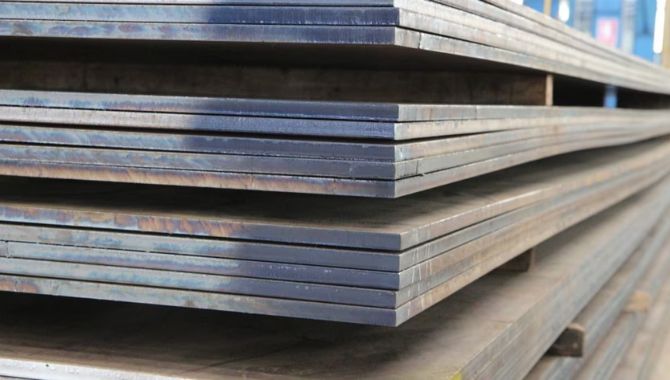
Top 5 4140 Steel Plate Suppliers
KDM Fabrication
With over 20 years making custom sheet metal, KDM Fabrication provides precision 4140 steel plates for different industries. Their ISO 9001 certification and advanced equipment (laser cutting, CNC machines etc) guarantee tight tolerances and consistent quality. KDM’s expertise in bending, welding and finishing allows custom 4140 solutions tailored to your needs. For high-performance and reliable 4140 plates, you can trust KDM to go beyond your expectations.
Universal Steel America
Universal Steel America are experts in processing and distributing 4140 plates. They offer a big inventory of 4140 from 1/4″ to 12″ thick in annealed, as-rolled, pre-hardened state. With global mills, Universal can source plates meeting exact specifications like ASME and API. Their processing includes plasma cutting, code welding and beveling.
TuoLian Metal
TuoLian Metal is a top stainless steel manufacturer in China. It provides best-quality 4140 steel plates. With ISO9001:2015 certification and over 10 years of expertise, they stick to strict standards like JIS and ASTM. TuoLian’s advanced equipment allows custom sizing and monthly output of 13,000 tons. They offer fast shipping, great after-sales support and competitive rates. Due to this, TuoLian has become one of the best 4140 steel plate suppliers in whole china.
Michlin Metals
With over 30 years of know-how, Michlin Metals is an experienced provider for 4140 steel plates and other hard-to-source alloys. Catering to industries from aerospace to oil & gas, they keep a large inventory of premier materials ready for quick delivery. Michlin’s ISO 9001:2015 certification means you will get products that meet the highest benchmarks.
Castle Metals
Castle Metals, a top global distributor established in 1890, supplies a broad range of 4140 steel plates for your specific requirements. With 130+ years under their belt, they’ve built a reputation for quality and dependability. Castle Metals stocks 4140 plates in different sizes and conditions—as-rolled pre-hardened and annealed, —you name it. Their supply chain expertness and huge inventory means on-time delivery for your important projects.
For your 4140 steel plate needs, you can trust Castle Metals to deliver best quality goods. You’ll notice the difference when working with true professionals.
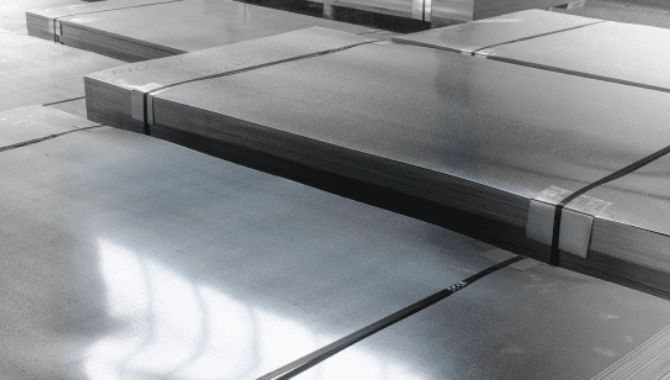
To Conclude
4140 steel plate provides matchless strength and flexibility which makes it the top option for challenging use cases. Its properties like machinability, high strength and corrosion protection make it the perfect solution for industries like aerospace, construction and automotive.
With its many upsides and applications, 4140 steel plate is the best option for projects needing high-performance materials. So if you want to buy top-quality 4140 steel plates, feel free to contact us now.
FAQs
Does 4140 Steel Plate Rust?
Yes, 4140 steel plate can rust since it has only moderate corrosion protection. To prevent rusting, particularly in harsh conditions, it needs treatments or protective coatings.
Can You Weld 4140 Steel Plate?
Yes, you can weld 4140 steel plate. But it requires careful preparation first. It includes pre-heating and post-weld heat treatment, to prevent cracking and guarantee a long-lasting and strong, weld joint.
Is 4140 Steel Plate Good for High Temp Use?
4140 steel plate works best for moderate high-temperature uses, typically up to 600°F (316°C). For higher heats, other alloy grades are better to maintain mechanical properties.
Should You Choose 4140 or 1045 Steel Plate?
Pick 4140 alloy steel plate for applications which need toughness higher strength and wear protection. Choose 1045 steel plate when easier machinability is most important and the use doesn’t require 4140’s extraordinary mechanical properties. You should consider 4140 for critical structural parts and 1045 for general purposes.




